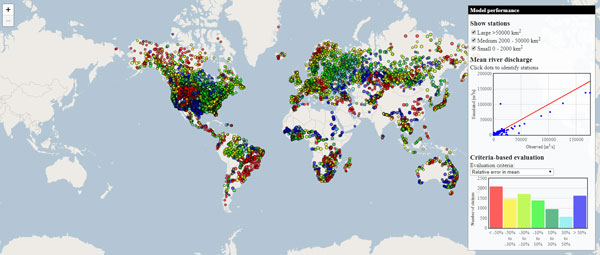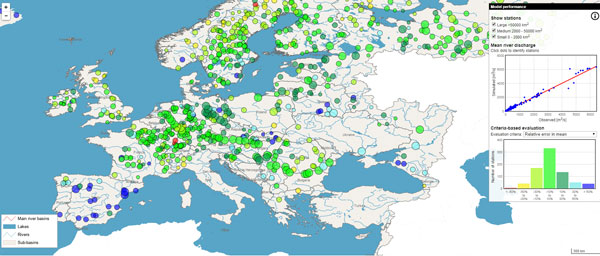Models are trying to simulate the real world based on numerical equations and simplified descriptions of the landscape. By definition, all models are wrong but can still be useful if they are close enough to reality. Depending on purpose, different users can accept different levels of uncertainty. It is thus up to the user to judge if the model performance is good enough before using the model results.
The HYPE results are compared to time-series of in-situ river-flow measured from gauges, wherever such data is available. For each geographical domain numerous monitoring stations are available, although most catchments remain unmonitored. Several statistical metrics are used to estimate model performance in each site. The most common ones are Relative error, Correlation coefficient, NSE (Nash and Sutcliff, 1970) and KGE (Gupta and Kling, 2008).
Explore model performance of river flow in specific sites and across regions in the interactive maps below!
References
Nash, J. E., & Sutcliffe, J. V. (1970). River flow forecasting through conceptual models. Journal of Hydrology, 10, 282–290.
Gupta, H. V., Kling, H., Yilmaz, K. K., & Martinez, G. F. (2009). Decomposition of the mean squared error and NSE performance criteria: Implications for improving hydrological modelling. Journal of Hydrology, 377(1-2), 80–91. doi:10.1016/j.jhydrol.2009.08.003



